"Normandie-Niemen". French regiment on the Russian front
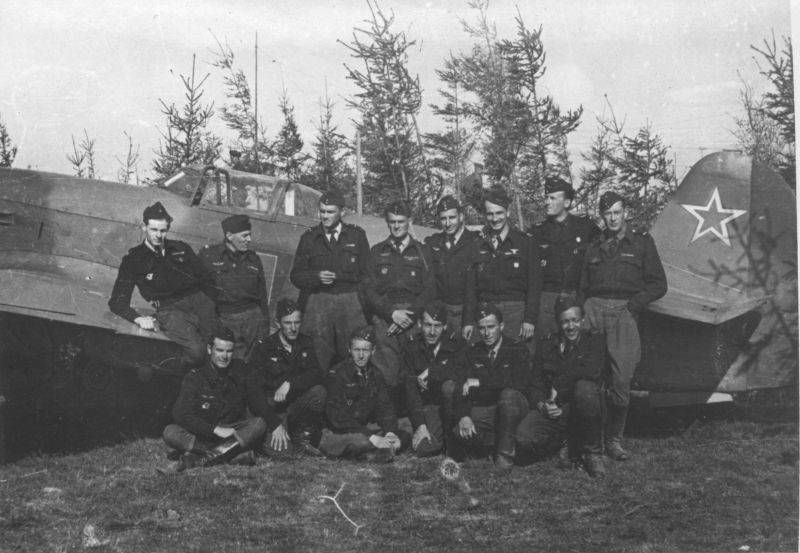
Pilots of the 1st squadron "Rouen" of the air regiment "Normandie-Niemen" near the Yak-3 fighter. 1944
Creation of the Normandy
In 1942, General de Gaulle decided that French soldiers should fight on all fronts of the war, including the Russian front. It was decided to send French pilots to the USSR. In the spring of 1942, the Free French National Committee proposed that the Soviet government send a group of its pilots and aircraft mechanics to the front. Moscow agreed.
From the best pilots of the 1st fighter air group of the Free French Air Force, based at that time in Lebanon, at the Rayak air base, air group No. 1942 was created in September 3. Soon it was transformed into a squadron, which received the name Normandie at the request of the personnel . Therefore, in the future, the French often called themselves "rayaks". The battle cry "Rayaks, forward!" became a feature of the Normandy.
On November 25, 1942, an agreement was signed on the participation of French Air Force units in hostilities on the Russian front. The pilots were recruited from the British Air Force and the Ile de France fighter group located in the British Isles (the so-called "British"), as well as from the Alsace fighter group, which was located in North Africa (the so-called " Libyans). Through Iraq, French pilots were transferred to Iran (occupied by British and Russian troops), and from there on transport planes to the USSR. On November 29, the French landed at the airfield of the Northern city of Ivanovo. The squadron's personnel consisted of 72 French volunteers (14 pilots and 58 aircraft mechanics) and 17 Soviet aircraft mechanics.
Among the first to arrive were Major J. Pouliken and the chief of staff, Senior Lieutenant J. de Pange. The pilots mastered Soviet technology on the UT-2, U-2, and then on the Yak-7 and Yak-1 fighters. By order of the commander of the Red Army Air Force dated December 4, 1942, the Normandy squadron was included in the USSR Air Force. By the beginning of 1943, all Normans were flying yaks. The French planes were decorated with red stars, but between the propeller and the cockpit on both sides of each machine, three colored stripes were applied: blue, white and red - the colors of the national flag of France.
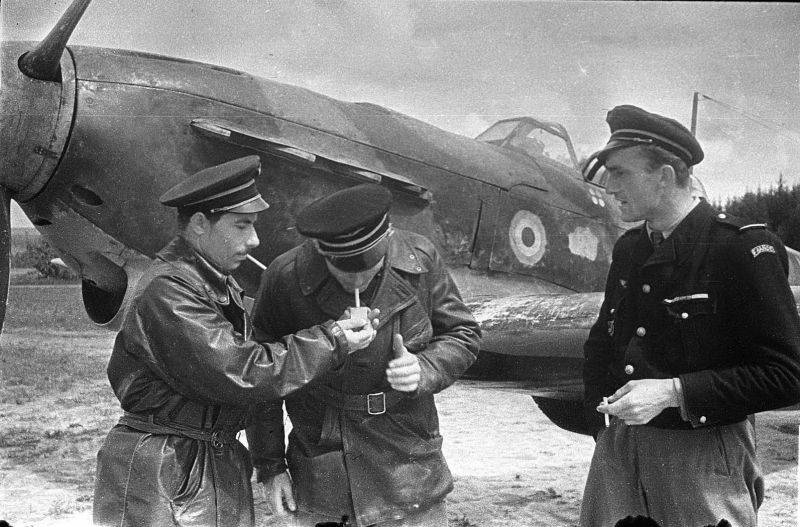
French pilots from the Normandie-Niemen squadron who fought the Germans on our front: junior pilot Joseph Rissot, lieutenant Derviov and lieutenant Noel Castelin. In the background is a Yak-1B fighter. June 1943
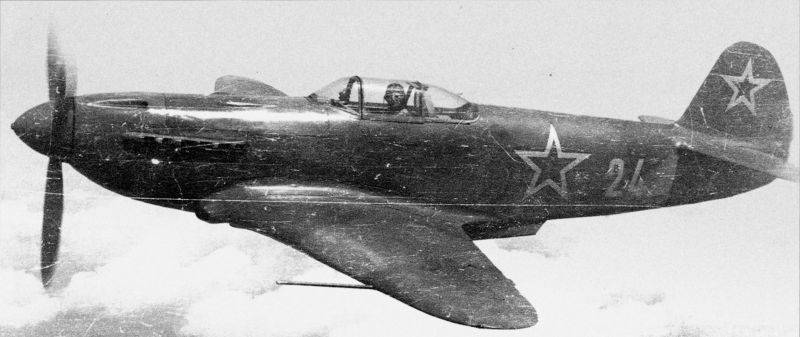
Fighter Yak-3 No. 24 junior lieutenant Jacques Andre of the Normandie-Niemen regiment in flight
At the front
In March 1943, the Norman squadron was considered combat-ready and sent to the front. 12 aircraft became part of the 1st Air Army. "Normandy" was subordinated to the commander of the 303rd Smolensk Fighter Division, and in its composition she later conducted her combat activities, based on the airfields of Vasilyevskoye, Khotenki, Spas-Demensk and Monastyrshchina.
On March 26, Lieutenants Durant and Derville drove off an enemy aircraft, marking the beginning of the squadron's combat activities. On April 5, the French covered the Soviet bombers. Two Yak-1 aircraft, piloted by Lieutenant Durand and Senior Lieutenant Preziosi, defeated two German FV-190s.
Since that time, the "Normans" began to regularly participate in air operations. On April 13, 1943, a second air battle took place in the area of Spas-Demensk. Six fighters under the command of Major Tyulyan fought with nine German vehicles. The French shot down three enemy planes, but suffered heavy losses: pilots R. Derville, A. Poznansky and I. Bizien did not return that day. This was the first heavy loss of the French squadron. The "Normans" fought bravely, desperately, often to the detriment of the common cause, which led to heavy losses.
On July 5, 1943, the squadron was replenished and reorganized into the Normandy regiment, which already included four squadrons that bore the names of the four main Norman cities: Rouen, Caen, Le Havre and Cherbourg.
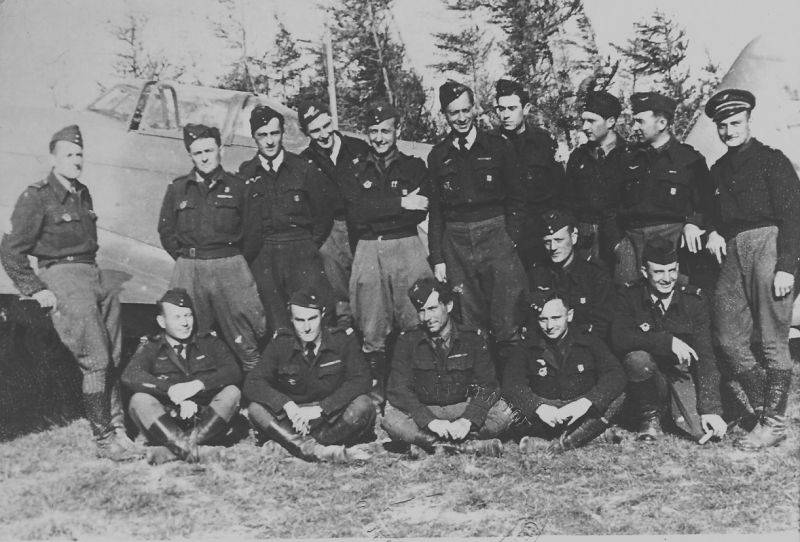
Pilots of the 2nd Le Havre Squadron of the Normandie-Niemen Air Regiment near the Yak-3 fighter. 1944
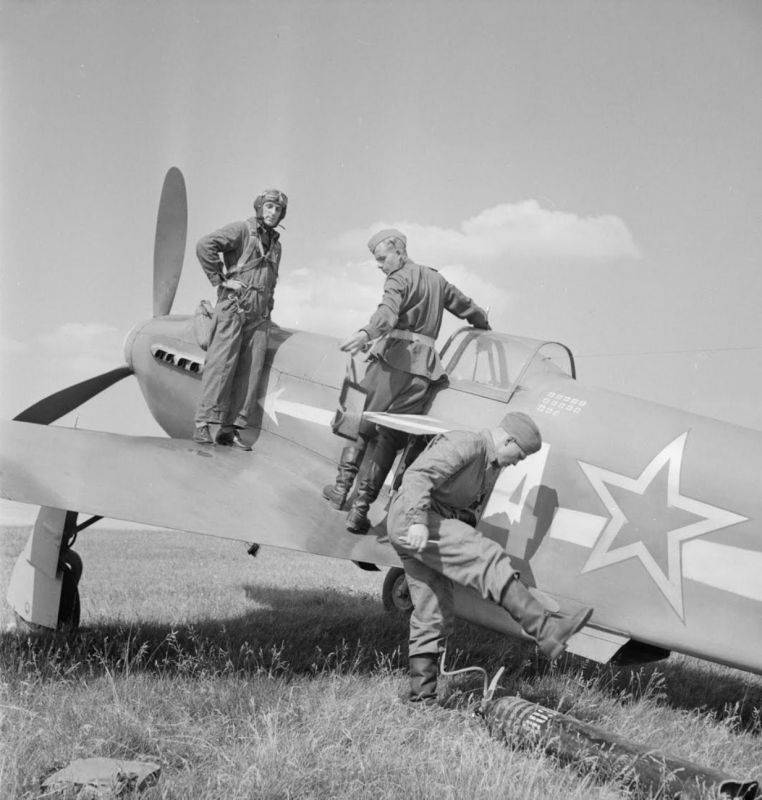
The French pilot of the Normandie-Niemen regiment and Soviet technicians are preparing the Yak-3 fighter for takeoff. The pilot in the photo is Lieutenant Roger Marquis
It is worth noting that, in addition to the native French, among the "Normans" there were also "French Russians" - the descendants of emigrants who left Russia after the events of 1917 or even earlier. Now the "French Russians" fought for their homeland. In particular, engineer and pilot Albert Mirles. It was he who began to form the core of the French squadron that would fight in Russia. Mirles pushed through the decision that the French would fight on Russian planes:
The "Normans" fought on the Kursk Bulge, liberated Belarus, fought in East Prussia. On November 28, 1944, for military merit and courage shown during air battles during the battles for the liberation of Lithuania and during the crossing of the Neman River, by order of Supreme Commander-in-Chief Stalin, the regiment was given the honorary name "Neman". It became known as the Normandie-Niemen Regiment.
During their stay on the Russian front from March 25, 1943 to May 9, 1945, the Normans made more than 5 sorties, conducted about 200 air battles, shot down 900 aircraft (another 273 victories were not confirmed) and damaged about 36 enemy aircraft. french aviation part lost 42 pilots.
Marcel Albert had the most air victories - 23. Jacques Andre shot down 15 enemy planes, Maurice Schall and Marcel Lefebvre - 10 each. For comparison: the best French ace of the Western Front Pierre Klosterman (fought for England in the Alsace group) shot down 19 planes.
By decrees of the Presidium of the Supreme Soviet of the USSR of February 19 and June 5, 1945, the regiment was awarded the Orders of the Red Banner and Alexander Nevsky. 96 Frenchmen were awarded 112 orders of the Soviet Union, and four were awarded the title of Hero of the Soviet Union (Marcel Albert, Rolland de la Pouap, Jacques Andre and Marcel Lefebvre). The French authorities awarded the regiment the Order of the Legion of Honor, the Order of the Liberation and the Military Cross 1939-1945.
On June 20, 1945, French pilots on 41 Yak-3 combat aircraft, which were donated by the USSR to France, flew to their homeland. In France, Yak-3 fighters were in service until 1947.
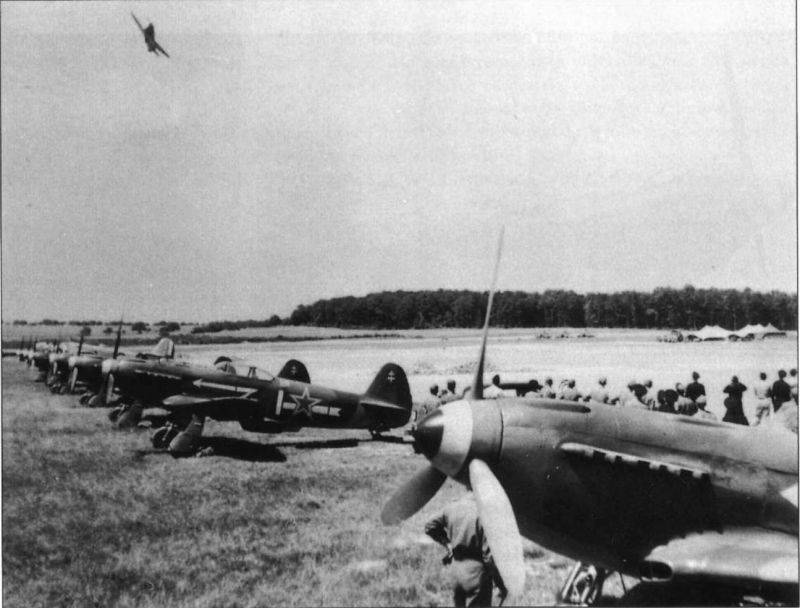
Yak-3 fighters of the 1st separate air regiment of the fighting France "Normandie-Niemen" at the airfield
The picture was taken after the end of the war at the Stuttgart airfield during the return of the regiment to France in June 1945. The stars on the tails of the aircraft have already been painted over, instead of them Lorraine crosses have been applied.
From the memoirs of Roland de la Poipa:
The 1st Alsace group was based in Stuttgart at that time, and for the first time we saw other French pilots, except for the Normandy, who looked at us with interest and our equipment, painted in a foreign way.
The yaks looked small and crude next to their all-metal Spitfires.
I quickly cooled them down.
"Guys, you'll be giggling after you see what he can do."
Marshi took to the air and showed such acrobatics that our colleagues, accustomed to Spitfires, opened their mouths and remembered it for a very long time ... "
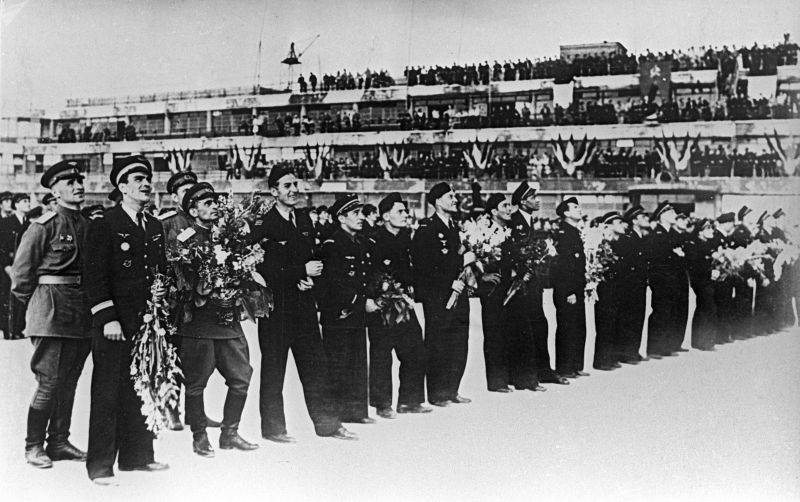
Pilots of the 1st separate air regiment of the fighting France "Normandie-Niemen" and officers of the Soviet Air Force watching flights at the Le Bourget airfield. June 1945
Information